
To meet the diverse application needs of customers, DigiKey’s application and technology webpage provides a variety of application-related resources to assist engineers in designing faster. From the application perspective, DigiKey offers various solutions for automotive, automation and control, IoT solutions, energy harvesting, and more.
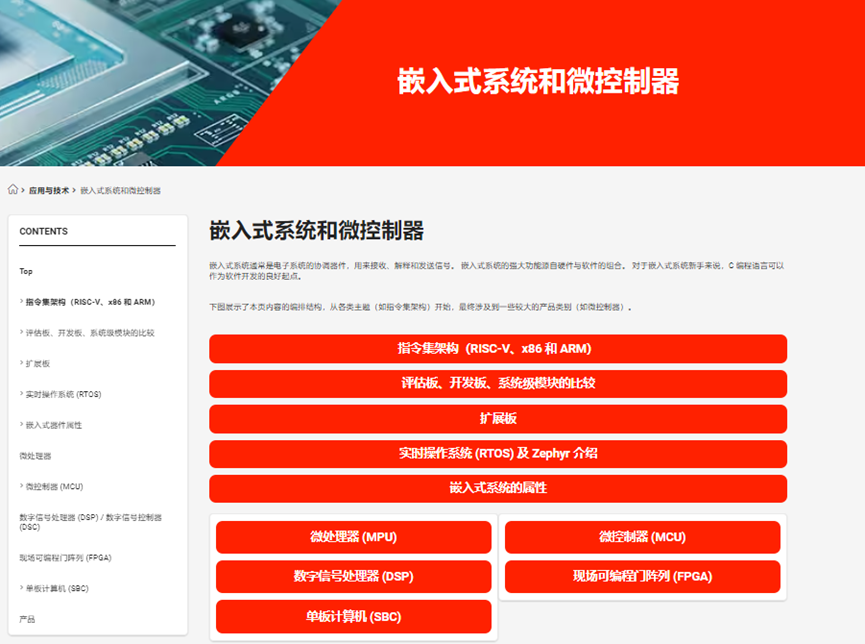
Furthermore, this webpage lists various ISAs covered by different embedded systems and microcontroller technologies, evaluation boards, development boards, system-on-modules, expansion boards, real-time operating systems, embedded peripheral components, microprocessors, digital signal processors, single board computers, microcontrollers, and field-programmable gate arrays, for researchers and electronics enthusiasts to further explore according to their needs.
Next, we will introduce various applications and technologies related to embedded systems on the webpage, such as evaluation boards and real-time operating systems (RTOS), microprocessors (MPU), various controllers (DSP, SBC, MCU, FPGA), and various peripherals (memory, clock, communication, I/O, power). Let’s first look at the relevant technologies and applications of embedded systems and microcontrollers.
“
Choosing Embedded Systems and Instruction Set Architectures
An embedded system is a special-purpose computer system that is usually embedded in other devices or systems to perform specific tasks or functions. These systems are typically designed for specific applications or products and consist of relatively small, specialized hardware and software. To build an embedded system, the first step is to confirm the desired Instruction Set Architecture (ISA). Each ISA has its advantages and disadvantages, and below we will roughly introduce the concept and scope of embedded systems and the aspects to consider when choosing an ISA.

The Application Fields of Embedded Systems Are Quite Extensive
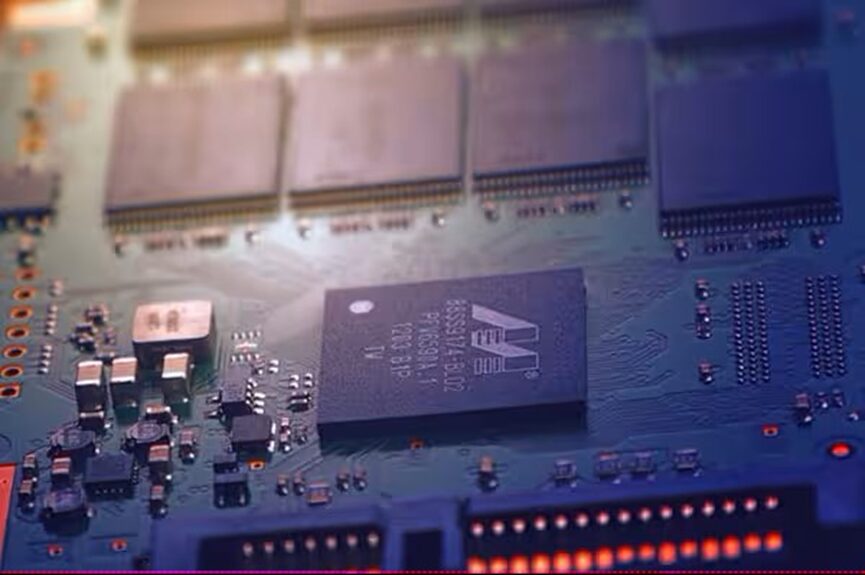
Choosing an Instruction Set Architecture Is the First Step in Developing Embedded Systems
Embedded systems typically coordinate the electronic systems that receive, interpret, and send signals, with functionality arising from the combination of hardware and software. For those new to embedded systems, programming in C can serve as an ideal starting point for software development. To engage in software development, one must begin with choosing the overall architecture (such as the instruction set architecture) and end with some larger control categories (such as microcontrollers).
The Instruction Set Architecture (ISA), also known as the instruction set or instruction set architecture, is the part of computer architecture related to program design, including basic data types, instruction sets, registers, addressing modes, storage systems, interrupts, exception handling, and external I/O. Typically, ISAs are not cross-compatible, so a system designed for one ISA usually cannot run on another ISA. For example, x86 systems and software cannot run on ARM chips because they handle program code instructions and data sets differently.
Of course, there are several different solutions available on the market to address compatibility issues, including software that simulates different ISA operating conditions or combining different ISAs into a single software toolkit. For example, ARM has created a hybrid architecture called ARM big.LITTLE, which is a heterogeneous multiprocessing architecture that prioritizes high-power processes by combining high-power and low-power processing cores in one system, allowing for greater system flexibility and more precise power management.
ISAs can generally be divided into Reduced Instruction Set Computing (RISC) and Complex Instruction Set Computing (CISC) architectures. The concept of RISC dates back to the 1980s, aiming to execute single-step operations in computations using a simple instruction set, primarily by reducing the number of simple instructions used to load, evaluate, and store data to simplify hardware. Generally, each program code instruction can be seen as performing one action for the computer system; simpler operations can achieve faster completion speeds and reduce power consumption, making them popular in portable devices or other applications driven by power efficiency.
In contrast, CISC allows for multiple instructions and program code operations to occur at each step of the computation process, typically involving complex instructions for loading and storing steps. Generally, CISC can be considered all instruction set architectures other than RISC, as this term was developed in response to the emergence of RISC chips and systems. Although CISC does not have an official definition, they are usually considered to have more complex design systems, thus typically requiring more power to operate.
The purposes of RISC and CISC architectures are actually aimed at making CPU execution faster: RISC achieves faster CPU execution speed by reducing the cycle of each instruction at the cost of reducing the total number of instructions for each application; while CISC aims to achieve the same goal by minimizing the number of instructions for each program at the cost of more complex hardware.
When choosing an instruction set architecture, various factors need to be considered, typically involving hardware, software, and system integration aspects, including performance requirements, power consumption, cost, software ecosystem, compatibility, scalability, and security. Overall, selecting an instruction set architecture is a complex decision-making process that requires comprehensive consideration of multiple factors and making appropriate choices based on specific application scenarios and needs.
Different Instruction Set Architectures Meet Different Application Needs
RISC-V
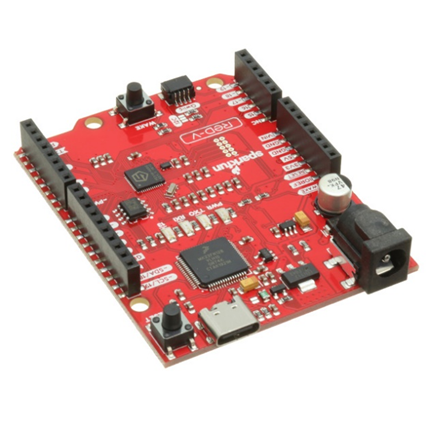
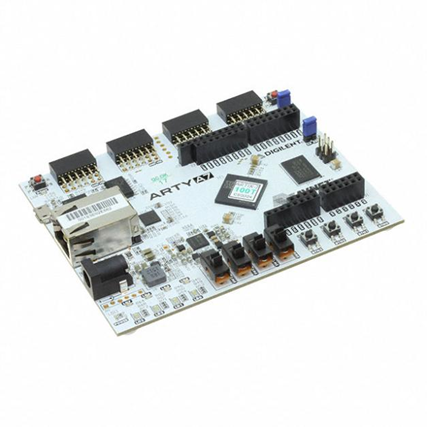
|
114993026 |
LOFIVE-R1, |
110991164 |
|
102110647 |
102991184 |
110991188 |
|
110991190 |
114992445 |
102110425 |
|
102991310 |
113991054 |
DEV-22925 |
|
ESP32-C3-DEVKIT-LIPO |
||
|
MPFS-ICICLE-KIT-ES |
MAX78002EVKIT# |
|
|
ESP32-C3-DEVKIT-LIPO |
P0082 |
|
DFR0470-ENT |
DFR0419 |
DFR0981 |
|
DFR0418 |
DFR0545 |
DFR0982 |
|
DFR0444 |
DFR0543 |
VL-EPM-16F |
|
SB02-3740-0000-C1-V |
||
|
SB02-4940-0000-C1-V |
ARM
ARM originally stood for “Advanced RISC Machines” (Advanced RISC Machines), but is now simply referred to as “ARM,” a series of RISC processors developed and licensed by Arm LTD. ARM adopts a RISC architecture, focusing on simplicity and energy efficiency. Due to its low power consumption and low heat generation, ARM chips are widely used in mobile devices and portable devices, embedded systems, and applications with low power requirements, such as smartphones, tablets, embedded systems, IoT devices, and certain laptops and other low-power devices. Common ARM development boards includeSTMicroelectronics NUCLEO and STMicroelectronics IOT .
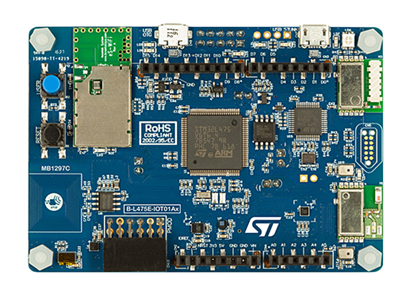
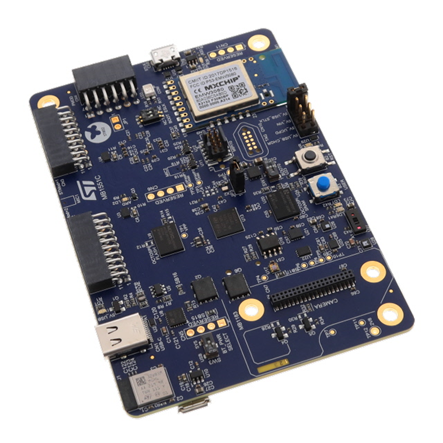
| 102110420 | SC0915 | SC0195(9) |
| SC0919 | DEV-16771 | DEV-16997 |
| MAKER-PI-RP2040 | SC0193(9) | SC0695 |
| SC0194(9) | SC0692 | SC0917 |
| 102010428 | EK-TM4C123GXL | NUCLEO-F103RB |
| STM32F407G-DISC1 | NUCLEO-F446RE | NUCLEO-L476RG |
| NUCLEO-H743ZI2 | DEV-16771 | B-U585I-IOT02A |
| NUCLEO-F401RE | NUCLEO-L053R8 | DEV-20359 |
| DEV-21438 | SC1146 | NUCLEO-F411RE |
| STM32F429I-DISC1 | NUCLEO-F746ZG | NUCLEO-G431KB |
| A000062 | ABX00012 | NUCLEO-G431RB |
| 102110646 | OM13058UL | NUCLEO-L152RE |
| NUCLEO-F303K8 | STM32H735G-DK | NUCLEO-F303RE |
| STM32F769I-DISCO | NUCLEO-L432KC | DEV-16402 |
| STM32F072B-DISCO | BBB01-SC-505 | ABX00087 |
| ST25R3911B-DISCO, | FRDM-KE06Z | CY8CKIT-043 |
| STM32MP157F-DK2 | NUCLEO-U575ZI-Q | 102010328 |
|
Instruction Set Architecture |
Comparison/Summary |
|
RISC-V |
Reduced Instruction Set Architecture, open-source and open architecture, with no licensing fees, the most promising instruction set architecture. |
|
x86 |
Complex instruction set architecture with a long history, widely used in personal computing, the preferred choice for personal computer compatibility. |
|
ARM |
Widely used in smartphones, reduced instruction set architecture, low power consumption, low heat generation, but requires licensing fees and has higher development costs. |

RISC-V Is Currently the Most Promising Instruction Set Architecture
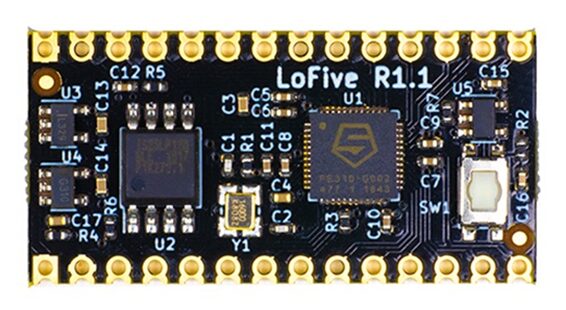
GroupGets LLC’s LoFive R1 RISC-V evaluation board
SparkFun RED-V is another low-cost entry-level development board, which has the same form factor as the established Arduino Uno R3, making it the best choice for those wanting to replace Arduino in existing designs. Seeed Studio GAPUino is another board fully compatible with the popular Arduino Uno R3 pins. However, its price is less affordable compared to the first two evaluation boards.
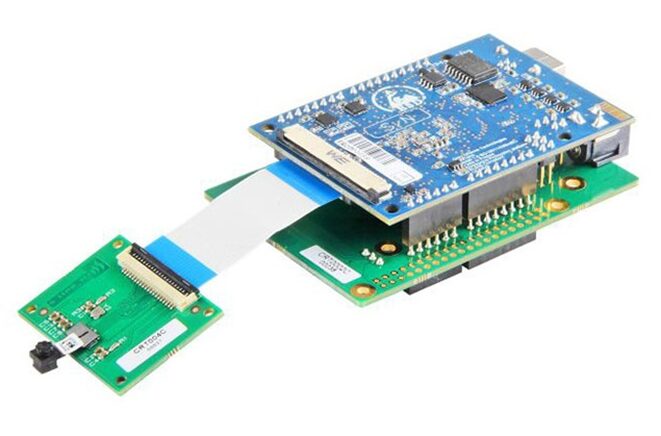
Conclusion
More related cutting-edge technologies and selected content:
-
RVfpga: Understanding RISC-V Architecture and Implementation on FPGA
-
Development Kit Limitations—How to Determine Compatibility
-
Expansion Boards/Subcards
-
How to Run the Same C Language Code on Chips from Multiple Vendors
-
Implementing AI Edge Computing with Asymmetric Multi-core RISC-V SoC FPGA, A Careful Guide!
-
First-Word Fall-Through (FWFT) Read Operations
-
FPGA Lean University | Introduction and Positioning of FPGA
-
FPGA Lean University | Professors Present Three Application Examples to Make You Love FPGA!
-
FPGA Lean University | Professors Explain: Detailed Explanation of Development Platform Selection
-
Kickstart Your Raspberry Pi – Quick Start
Editor’s Note




↙
Click the “Read Original” below for more
Let Me Know YouAre Reading This!
